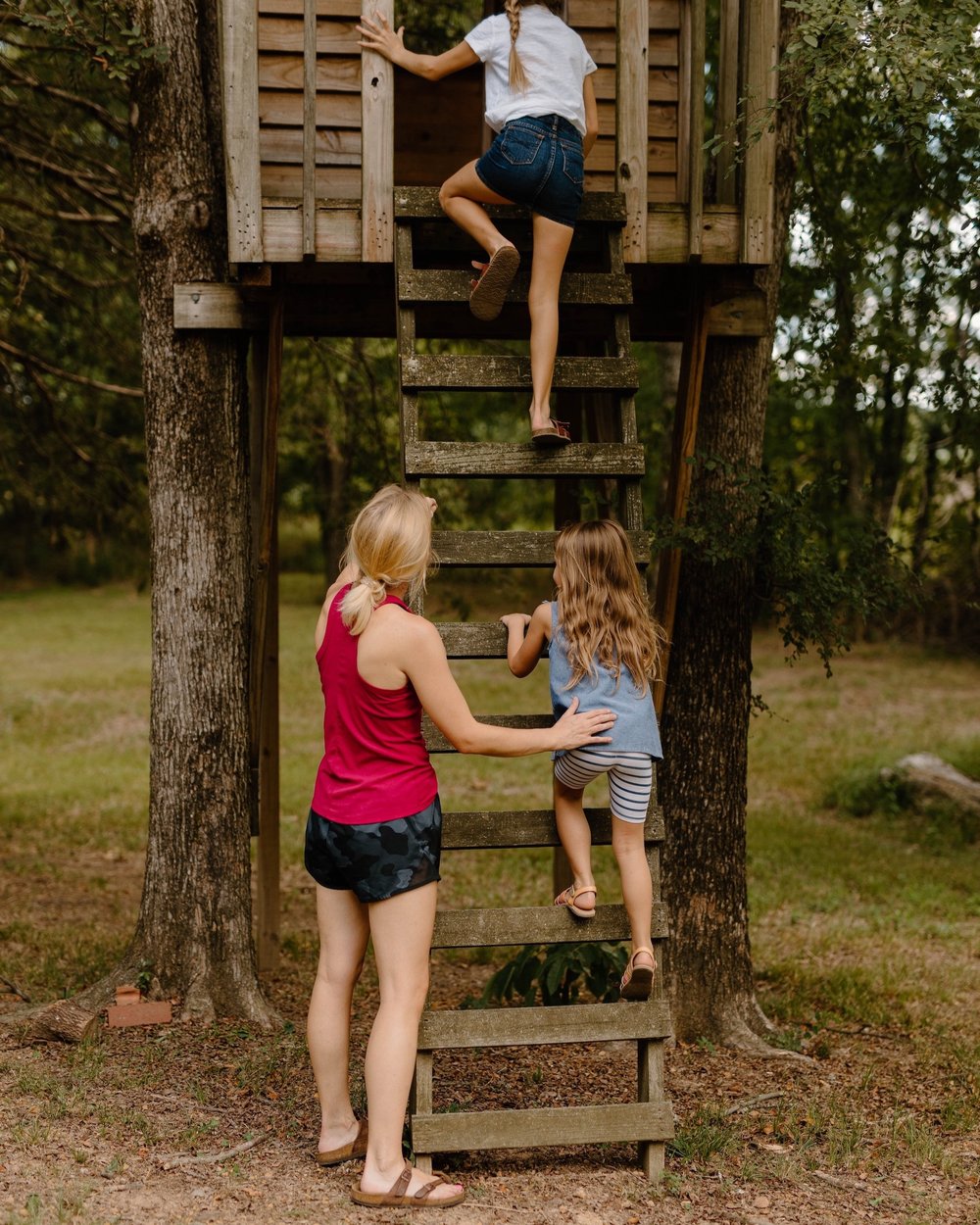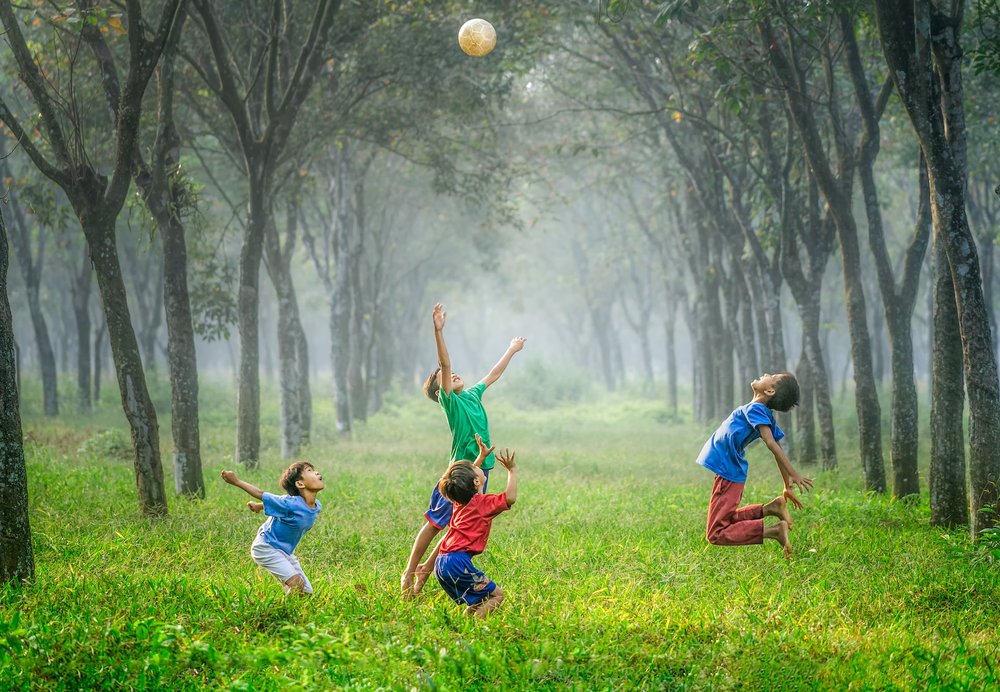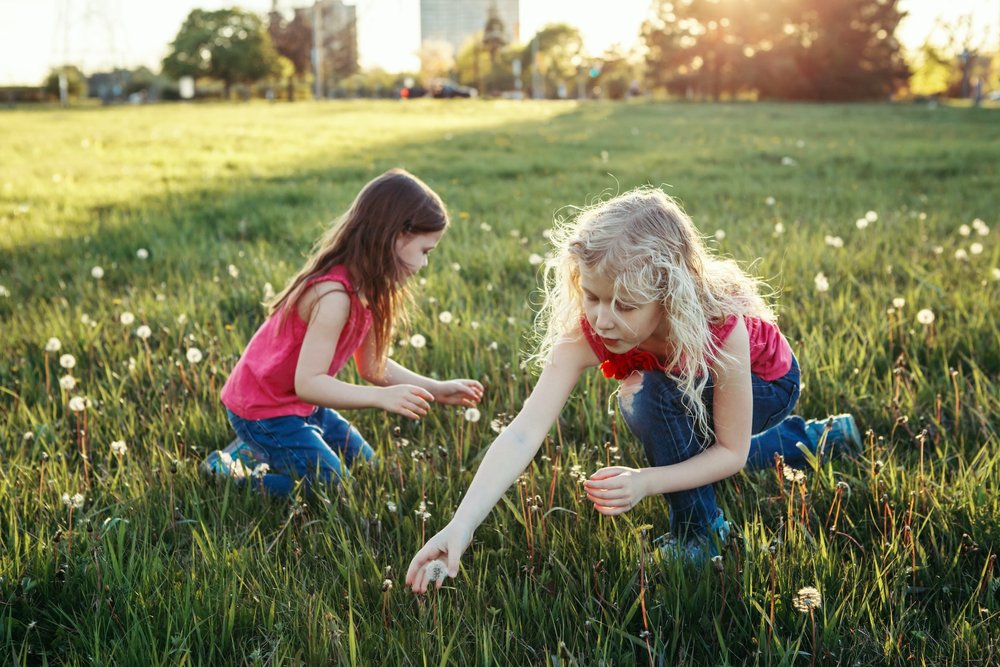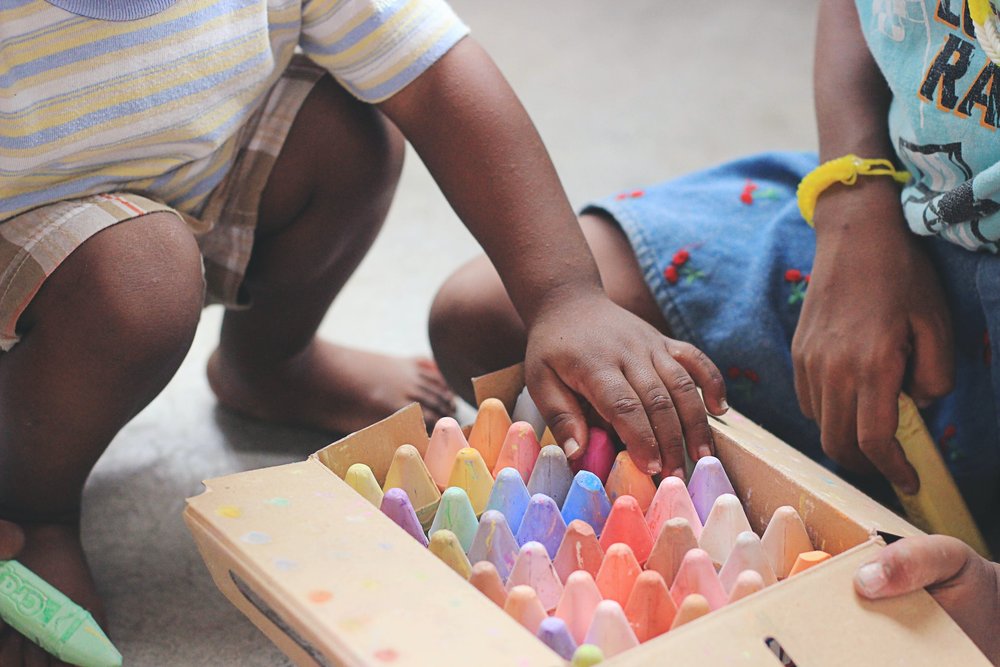A Complete Guide to Hours of Outdoor Family Fun & Nature-Based Play

A Guide to Outside Play & Why IT’s Important
The mainstream way of life often means children are spending unprecedented amounts of time in front of screens. Recent statistics report that, on average, children spend six to nine hours daily in front of screens, with four to five of those hours spent watching TV. Extended screen time exposure is leading to higher rates of depression and obesity, back and neck problems, and disturbances with sleep and behavior.
Modern family life has also brought with it an increase in structured, scheduled activities for kids.
While sports and classes certainly have advantages, studies are revealing that time spent in unstructured play, especially outside in nature, does a better job of meeting their developmental needs and has huge benefits.
Let’s take a deeper dive into those benefits and how you can set your family up for success when it comes to meeting your “spend more time outside” goals.
First, let’s talk about why playing outside is so very important for children of any age.
What are the Benefits of Outside Play
An article in Parenting Science outlines 12 important benefits of outdoor play in case you need some extra motivation to get out there and make it happen.
From a lower risk of obesity, near-sightedness, behavior problems, and sleep issues to an increased ability to problem-solve, concentrate, and recover from stress, the reasons to spend more time outside are plentiful.
One of the most noteworthy benefits to mention here is that positive nature experiences teach kids to respect and protect the environment. The article states, “Researchers found that childhood time spent outdoors was positively linked with environmentally responsible behavior during young adulthood.”
Now that you’re inspired to get your kids and family outside more often let’s talk about what child development experts have to say about how much time spent playing outdoors is the “right” amount.
What are the Guidelines for Outside Play
The popular site 1000 Hours Outside discusses that when children are immersed in nature, they’re experiencing the optimal sensory environment for higher-level development. Research suggests that three hours per day provides the ideal amount of exposure to all the benefits outside play has to offer in order to see the most positive effects on development.
Before you balk at the unrealistic expectation of hours of time spent outside, take into consideration that studies are also showing that, on average, children are most likely outside for only approximately 30 minutes a few times a week. And that children spend an average of 1,200 hours per year on screens.
So, take heart that any goal you can set for yourself and your family to get your children more outside time will do them a lot of good.
The most important takeaway from learning the benefits and research around playtime outside is to do the best you can. If all you have is 20 minutes a day, that’s perfectly fine! Any amount from a few minutes to a few hours will have a positive impact on your child’s emotional regulation, physical well-being, and holistic development.

Getting Started with Nature-based Play
Once you’ve determined to get outside more often and for longer periods of time, there are a few things to take into consideration to ensure a positive experience for everyone involved.
Sun protection and safety
You can find eco-friendly and sustainably made options for sunscreen, hats, and band-aids from one of our favorite sites Kindhumans. They even have a First Aid Kit if you want to really make sure you’re fully stocked.
Putting together an “outside time” kit with these things on hand means staying safe and protected even during peak daylight hours or experimenting with risky play.
Nutritious Snacks and Hydration
You’re sure to realize that when kids spend active time outside, they’ll need the right healthy snacks and plenty of water to keep them fueled for longer durations of time.
Pack slow-burning snacks like trail mix, fresh fruits, and healthy fats and proteins like avocado and cheese when you’re out for a nature walk or just exploring the backyard.
Keeping food and water easily accessible will mean you don’t have to interrupt their playtime by going back in to get fed and hydrated.
The Right Gear
A popular quote among outdoor enthusiasts is, “There’s no such thing as bad weather, only unsuitable clothing.” And to a certain extent, with the right perspective, it’s very true.
Investing in durable clothing for your child means they can play comfortably, tree-climbing and puddle-jumping, without needing to purchase new pants because they got torn or boots because they’ve fallen apart.
When you get all set to spend more time outside, you might find yourself wondering, “What do kids actually need to be doing during outdoor play?”. Great question!
It turns out that nature provides almost everything kids actually need to get immersed in the type of imaginative play and exploration that boosts their development.

Examples of Nature-based Play
Loose parts play has long been advocated for by fellow early childhood professionals and is growing in popularity among the parenting community as well. Items found in nature, such as small twigs, maple tree seeds, and acorns, to name a few, are perfect for collecting and having on hand for engaging in loose parts exploration.
Wildschooling, according to the Wilder Child website, is “a movement designed to honor and support our innate, inexorable bond with nature and lend a voice to our inner wild.” The philosophy and practices incorporate a mix of early childhood nature-based techniques taken from methodologies such as Regio Emilia and Waldorf education.
You can use the resources from sites like these to inspire a deep love of nature and take some of the pressure off around how to “structure” outdoor play, and instead, gently guide your kids into independent, imaginative exploration.
Here is a list of 10 suggestions for outdoor play to get you started:
Set up a “mud kitchen”
Create an obstacle course
Make a nature-weaving frame
Build a fort or giant bird’s nest with branches
Walk barefoot
Explore local hiking trails
Do yoga
Make a stick maze
Hang a bird feeder
Climb trees
When you do find yourself needing more structured activities or if you don’t have access to places where you can be immersed in nature, we have some excellent recommendations for eco-friendly equipment that will keep kids busy for hours.

The Best Toys and Equipment to Enrich Outdoor Play
The guide found here at Earth Easy gives some incredible DIY suggestions for turning your backyard into a natural playground haven, complete with a backyard river system and a sensory garden!
If you’re in the market for a stroller, you’ll definitely want to check out our blog posts here to learn about seven of our favorite eco-friendly options. The right stroller can make a world of difference in getting out and about with young kids and all the stuff that comes along with them. A quality stroller will likely also motivate you to do more walking to local places instead of driving, which is always a great eco-friendly option.
If you’re a person who practically lives in swimwear during warm weather, have a look at our 18 Sustainable Swimwear Brands post to get something that’s the perfect fit for while you’re hanging out with the kids outside. Time spent at the beach is the perfect environment for unstructured play and offers kids the full sensory experience they need for the greatest developmental benefits.
When it comes to outside, and movement toys, one of our favorites is this scooter from Micro Kickboard. Riding a scooter increases coordination and balance and boosts muscle and even cognitive development. A balance bike, skateboard, or rollerblades are other great options for improving large motor skills. Hanging a tree swing is also a great choice, and especially for kids who seek sensory input, this can be really calming.
Using fingerpaint outside is a great way to give kids messy sensory experiences that are beneficial to their development without the clean-up inside. Sidewalk chalk is always fun too. You can also try making eco-friendly glitter/confetti by cutting flowers and grass into tiny pieces to be used on your next craft project. And we absolutely love this idea for making a DIY water wall using recycled plastic materials.
And last but certainly not least, for things like large push trucks, buckets, shovels, and water toys, we highly recommend the Green Toys brand. They’re made in the U.S. and are composed of 100% recycled materials. How cool is that?
(We especially love the jump rope, eco saucer, and watering can set.)
We hope this guide to outdoor family fun has inspired you to prioritize time in nature and unstructured play. Among its many benefits, time outdoors also enhances creativity and imagination and boosts critical thinking skills.
In our ever-evolving world, with the challenges our planet faces because of climate change, we’ll need a generation of kids who are ready to create innovations for a brighter future that we can’t even imagine yet. More time outside is the way to raise kids today who will be making a difference in the world tomorrow. Now, go play!

About the Author:
Amy is a freelance writer for change-making eco-friendly and women-led businesses. She's known for her empathetic ability to capture brand voice, conversational yet informative writing style, and expertly paired GIFs.
At home you'll find her sipping a mushroom latte, attempting to stay consistent with her meditation practice, and cultivating a slow, sustainable lifestyle with her two boys filled with music, nature, art, and lots of laughter. Follow along with her adventures on Instagram!
MAKE SURE TO PIN THE PHOTO BELOW TO SAVE THIS POST FOR LATER!

WANT TO FIND SUSTAINABLE BRANDS? VISIT OUR BRAND DIRECTORY!
Our Brand Directory is home to hundreds of sustainable brands, from makeup to cleaning supplies, from underwear to shoes. We have broken everything down by category for easy shopping, along with discount codes unique to Sustainably Chic viewers.
Browse Our Sustainable Brand Directory